What You don't know about fish of the Red Sea?
We would like to introduce you to the various species of fish that commonly occur in the Red Sea through photographs collected during the time working as diving instructors in Hurghada. You will find here articles about each family of fish or a summary of information about fish that are similar in some way. The goal is to provide a few facts about different species of fish that might interest you. Hopefully you find what you need here and I wish you many new discoveries while diving in the Red Sea.
Read one from the articles from our book: About Sharks
Selachimorpha
-
Most shark species must swim to breathe.
-
The jaws of sharks are equipped with strong muscles. The teeth are arranged in several rows and new can grow.
-
Sharks have a very good sense of smell, vision and so-called lateral lines compared to sonar. Thanks to them, they register vibrations.
1. The development of sharks began already in Paleozoic era
You can also meet sharks while diving off the reefs in the Red Sea. They are not seen very often, but there is a chance. There are over 40 different species of sharks in the Red Sea. The first sharks already lived in the Paleolithic, the oldest fossils found are up to 450 million years old. Like stingrays, sharks belong to the class Chondrichthyes, which means they have a cartilaginous skeleton. A separate superorder Selachimorpha was created for sharks. They are characterized by a torpedo-like body shape, usually five gill slits on the sides of the body and a pointed dorsal fin not connected to the head. Considering reproduction, sharks are mostly viviparous or oviparous.
2. Predators with tooth regeneration abilities
Sharks are predators, which is reflected in their body structure. They mainly hunt fish, but also, for example, crustaceans, cephalopods or other animals. Sharks do not have a gas bladder, its function is taken over by a large liver filled with a lot of light fat. This allows them to attack with a very quick change of depth. Their jaws are equipped with very strong muscles. The sharp, triangular shaped teeth are usually arranged in several rows. If the first row of teeth is damaged, the teeth will bend out, fall out and be replaced by the second row. The next row then grows to the sharks, so they have an unlimited ability to regenerate teeth. However, we also meet Whale shark (Rhincodon typus), which feeds on plankton and small fish. Its teeth are small and located at the back of the mouth, they are more like growths that create a sieve for filtering food.
3. Sharks have extraordinarily developed senses
Sharks have super-developed sensory organs. They have exceptionally developed hearing, they can hear even very low frequencies for several kilometers, and they are attracted to them. Another developed sense is the sense of smell, they can sense a trace of blood or secretions excreted by a startled fish several hundred meters away. In addition, sharks have a channel on the sides of the body, the so-called lateral line stretching from the head to the tail fin equipped with sensory cells. They use it to register all vibrations and it is compared to sonar. Sharks also have very well developed vision. The eye is similar to the eye of vertebrates, but perfectly adapted to the underwater environment, it can see well in the dark and at a short distance even above the surface. Under the gills, sharks have the so-called ampullae of Lorenzini, which detect changes in the electromagnetic field, thanks to which they can find prey that is, for example buried in sand.
4. They have to swim to breathe, but there are exceptions
Most of the sharks have to swim to be able to breathe. It means the water taken in by their mouths flows through their gills and thus oxygenate their blood, they must move, keep swimming. But we have exceptions here again. For example Whitetip reef shark (Triaenodon obesus) or Zebra shark, also called leopard shark (Stegostoma fasciatum), often lies motionless on the bottom. These species can pump water into their gills and thus draw oxygen from it.
5. Shark species in the Red Sea
Shark species found in the Egyptian part of the Red Sea include, for example Oceanic whitetip shark (Carcharhinus longimanus) - 3.5m, Mako shark (Isurus oxyrinchus) - 3m, Tiger shark (Galeocerdo cuvier) - 5m, Scalloped hammerhead (Sphyrna lewini) - 4m, Silvertip shark (Carcharhinus albimarginatus) - 3m or Thresher shark (Alopias pelagicus) - 3m and others. The chance to see these species is on reefs falling to great depths and with strong currents (e.g. The Brothers and Daedalus), which can be reached by safari boats. Sharks do not usually attack divers. Cases of shark attacks on humans in Egypt have involved swimmers at the surface, which sharks may see as their normal prey. The oceanic whitetip shark, the tiger shark or the mako shark are considered particularly dangerous. For example Whitetip reef shark (Triaenodon obesus), which usually grows to a length of around 1.6 meters, can be found on the reerfs around Hurghada. There is a greater chance of seeing these sharks in the winter months when they lie in caves at sites that are accessible for diving. A few times we met a Zebra shark (Stegostoma fasciatum) up to 2.5 meters long, which can also rest on a shallow shelf. Occasionally we are lucky enough to track down Whale shark (Rhincodon typus), usually in the open sea and rarely near the coral reef. This shark can grow up to 12 meters. Thanks to its behavior towards humans and when we see it eating plankton just below the surface, it is possible to snorkel with this species of shark.
We are preparing:
About Sea Animals
You will find various animals in this book you can meet while diving on coral reefs. The life of the Red Sea is really rich and colorful. You can meet mammals, reptiles, echinoderms, cephalopods, snails, polychaetes, bivalves, crustaceans and more... So if you would like to know more about dolphins, sea turtles, nudibranches, octopuses, sea stars, shrimps and crabs living in the Red Sea, you will find it here.
About Corals
We would like to provide you with an overview of the different types of corals found in the Red Sea. We will bring you a new series of articles dedicated to corals. Due to the diversity of coral species, we will try to sort corals according to both species and visual similarities. It might seem to many that they are more plants or some kind of inanimate petrified formations. However, these are colonies of invertebrate animals - tiny genetically identical coral polyps.





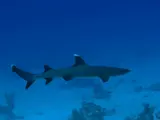

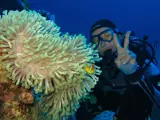
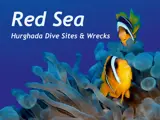
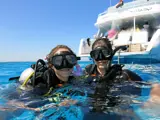
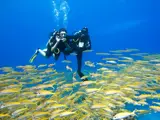
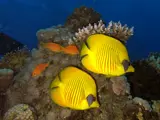
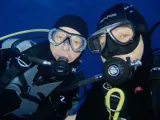

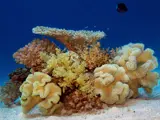
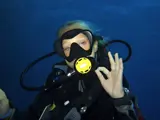
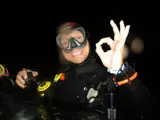
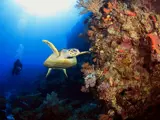
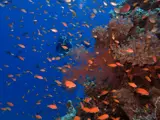
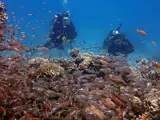
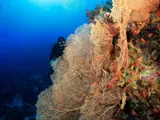
About the author
Pavla